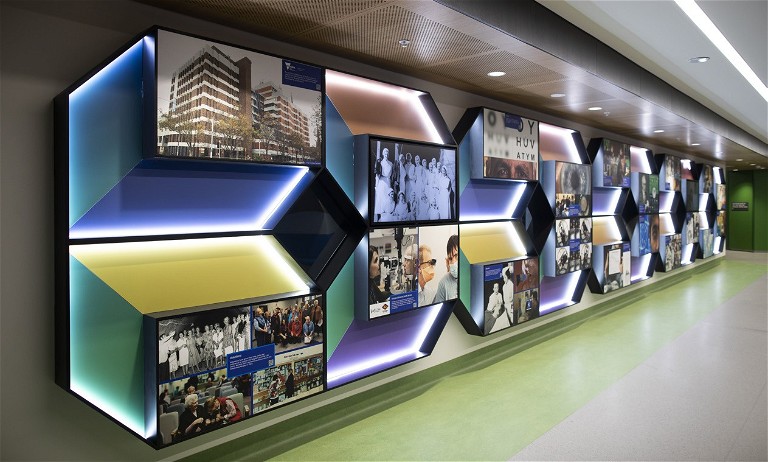minews
Redeveloped Royal Victorian Eye and Ear Hospital Opens
Redevelopment of The Royal Victorian Eye and Ear Hospital (Eye and Ear) in Melbourne has been completed, providing patients and staff with a more accessible, lighter, brighter, and more welcoming space that is expected to enhance patient experience and outcomes.
The redeveloped facility was unveiled at an event officiated by the Hon. Mary-Anne Thomas, the Victorian Minister for Health and Health Infrastructure.
A leading provider of eye and ear health in Victoria, the Eye and Ear integrates clinical care, research, and education to optimise innovation and provide advanced treatments for vision and hearing loss. From having 60 inpatients in 1865, in 2022–23 the hospital provided over 192,000 episodes of care, including over 136,000 specialist clinic appointments, 42,371 emergency attendances, and over 14,000 inpatient admissions.
Eye and Ear now boasts a 24-hour Emergency Department (ED), ED Short Stay Unit with four 24-hour beds, a perioperative suite with eight state-of-the-art theatres, a fresh inpatient ward with 24 beds, and a dedicated floor for clinics offering over 90 specialist services.
At the unveiling of the redeveloped facility in April, Chief Executive Officer, Brendon Gardner, said the redevelopment of Australia’s only eye, ear, nose and throat hospital, “signifies a new chapter” in the Eye and Ear’s 160-year history.
“As Victoria’s third oldest public hospital, our specialist knowledge and expertise position us well to continue to provide the best care for Victorians over the next 160 years and beyond,” he said.
WORTH THE WAIT
Associate Professor Penelope Allen, Head of the Eye and Ear’s Vitreoretinal Surgical Unit, said the renovation took a long time, which was difficult for staff and patients, however the result was worth the wait.
“As a vitreoretinal surgeon, the types of procedures patients undergo are very stressful – retinal detachment is a catastrophic thing to happen and any steps that make that journey of care easier is what we want,” she said.
Compounding the stress of vitreoretinal – or any other surgery – she said many of Eye and Ear’s patients do not have English as a first language. Additionally, a significant proportion of patients are elderly, frail, and living with mobility issues.
“So what we want is to make it as user-friendly as possible for patients, we want to make care as straightforward as possible and more efficient so that we can care for more people.”
With this in mind, the hospital was redesigned with outpatients’ screening and clinical rooms on one level, and preadmission, surgical theatres and post-operative care on a single level as well, which “makes flow a lot easier, especially for those who struggle with signs in English, and who have mobility issues”, Assoc Prof Allen said.
Assoc Prof Allen described the hospital café and foyer on the lower levels as being light, spacious, and welcoming for patients, as well as “pleasant for staff, which is good for morale”.
A history wall on the ground floor presents video and audio on how things were done in the hospital in the1800s and the progression to current care. “It’s very well done, and I think it’s interesting to see patients and relatives sitting watching,” said Assoc Prof Allen. “So far, feedback from patients and relatives has been positive, so I hope (the redevelopment) really makes their time in care at the hospital smoother.”
INTERNATIONALLY RENOWNED
The Eye and Ear has been nationally and internationally renowned for teaching, training, and research since its founding in 1863.
Having been built on three pillars: care, training and research, Assoc Prof Allen said, “What is most profound to me is that we are all still upholding these principles today. The Eye and Ear is the leading trainer of ophthalmologists in Victoria through the Royal Australian and New Zealand College of Ophthalmology. Doctors from all over the world come to train at the hospital in ophthalmology and otolaryngology, to learn from leaders in the industry, colleagues, renowned here and internationally. Our dedication to research and improving patient’s lives now and in the future is something I know we constantly strive for.”

History wall designed by Leo Farrell.